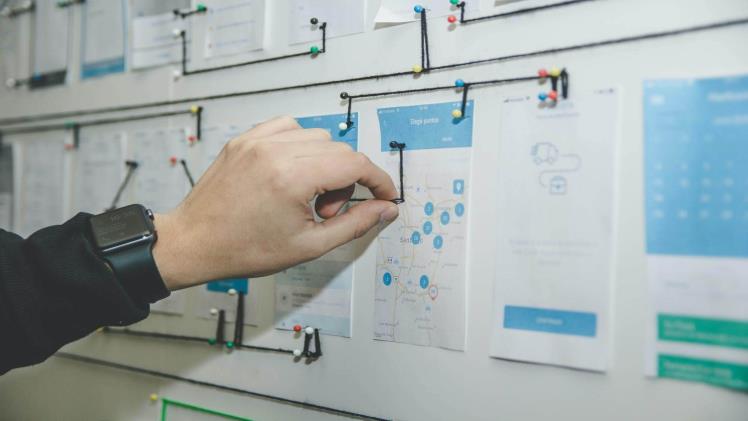Agile project management has emerged as the go-to methodology for companies looking to adapt, innovate, and deliver value quickly. One of the critical components of successful agile project management is building a well-defined workflow. In this blog post, we’ll delve into the essential aspects of creating a workflow for agile project management, emphasizing the use of workflow platforms and efficient low-code workflow management.
What is Agile Project Management?
Before we dive into building a workflow, let’s briefly review what agile project management is all about. Agile is a project management approach that emphasizes collaboration, flexibility, and customer-centricity. It encourages iterative development, allowing teams to deliver small, frequent releases of a product rather than one large, final deliverable. Agile principles prioritize responding to change over following a plan, and customer feedback is invaluable throughout the fame fountain.
The Importance of a Well-Defined Workflow
A well-defined workflow is the backbone of agile project management. It provides structure, clarity, and a systematic approach to managing tasks, priorities, and progress. A solid workflow helps teams:
Align Goals: It ensures that everyone on the team understands the project’s objectives and how their work contributes to these goals.
Enhance Collaboration: It fosters collaboration among team members, as they can see the flow of work and dependencies.
Optimize Resource Allocation: A well-structured workflow helps in allocating resources efficiently, reducing bottlenecks and overloading team members.
Improve Transparency: Team members and stakeholders can easily track progress and identify any roadblocks or issues.
Adapt Quickly: Agile workflows are designed to adapt to changes, allowing teams to pivot when necessary without derailing the project.
Choosing the Right Workflow Platforms
Workflow platforms are essential tools for building and managing agile workflows. These platforms streamline processes, automate tasks, and provide visibility into the project’s status. Here are some popular no-code workflow platforms to consider:
Cflow: Cflow is a user-friendly platform that utilizes intuitive boards, lists, and cards to represent tasks, making it an excellent choice for smaller teams with straightforward workflows.
Asana: Asana offers more robust project management features, including task dependencies, timelines, and integration with various other tools.
Jira: Jira is a powerful platform often used by software development teams. It provides advanced project tracking, reporting, and customization options.
Monday.com: This platform offers a visual approach to project management with customizable boards and automation features.
When selecting a workflow platform, consider your team’s specific needs, the complexity of your projects, and your budget. Each platform has its unique features, so choose one that aligns with your workflow management yoho hindi.
Building Your Agile Workflow
Now that you’ve chosen a workflow platform, it’s time to build your agile workflow. Here’s a step-by-step guide to help you get started:
Step 1: Define Your Agile Process
Begin by defining your agile process. Identify the key stages of your project, from ideation to delivery. For example, you might have stages like “Backlog,” “In Progress,” “Testing,” and “Done.”
Step 2: Create Workflow Templates
Most workflow platforms allow you to create templates for your processes. These templates serve as the foundation for your projects. Customize them to match your specific requirements.
Step 3: Assign Tasks and Dependencies
Assign tasks to team members and define task dependencies. Clearly outline which tasks need to be completed before others can start, ensuring smooth progress.
Step 4: Set Priorities and Deadlines
Prioritize tasks based on their importance and set realistic deadlines. Be mindful of your team’s capacity and avoid overloading them with work.
Step 5: Monitor Progress
Use the workflow platform’s reporting and tracking features to monitor progress. Regularly review your workflow to identify bottlenecks or areas for improvement.
Step 6: Adapt to Changes
Agile workflows are designed to adapt to changes. When unexpected issues arise or customer feedback suggests a different direction, be ready to make adjustments to your workflow.
Efficient Workflow Management
Efficient workflow management is key to the success of your agile projects. Here are some best practices to ensure your workflow runs smoothly:
Regular Stand-up Meetings: Hold daily or weekly stand-up meetings to keep everyone on the same page and address any roadblocks.
Continuous Improvement: Encourage your team to provide feedback and suggest improvements to the workflow regularly.
Automation: Use automation features in your workflow platform to reduce manual tasks and save time.
Training and Onboarding: Ensure that all team members are proficient in using the chosen workflow platform to maximize its benefits.
Transparency: Maintain transparency by making project information, progress, and goals easily accessible to all stakeholders.
Conclusion
In conclusion, building a workflow for agile project management is a crucial step toward achieving success in today’s dynamic business environment. Utilizing the right workflow platform and following best practices in workflow management can make your agile projects more efficient, transparent, and adaptable. Remember that agile is about continuous improvement, so be open to refining your workflow as you learn from each project iteration. With the right approach and tools, you’ll be well-equipped to navigate the challenges and opportunities of agile project management.

